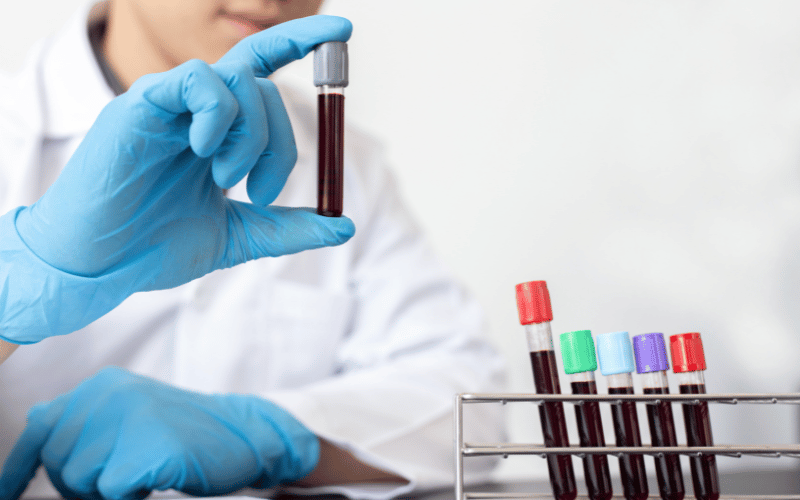Fact 8. Diagnosis of Hashimoto’s Involves Blood Tests and Ultrasound Imaging

Diagnosing Hashimoto’s Thyroiditis is a multistep process. The first and most critical step in diagnosing Hashimoto’s Thyroiditis is to recognize the signs and symptoms. Given the non-specific nature of these symptoms, clinicians often rely on their clinical acumen and index of suspicion to initiate the process of diagnosis.
After recognizing potential symptoms, the next step involves running specific blood tests. The most common blood tests include TSH (thyroid-stimulating hormone), Free T4, Free T3, and thyroid antibody tests.
The TSH test measures the amount of thyroid-stimulating hormone in your blood, which is produced by the pituitary gland in response to the levels of thyroid hormones in the body. If the thyroid gland is not producing enough hormones, the pituitary gland produces more TSH to stimulate the thyroid, leading to elevated TSH levels.
On the other hand, the Free T4 and Free T3 tests measure the levels of active thyroid hormones in the blood. Lower than normal levels of these hormones can indicate an underactive thyroid or hypothyroidism. However, it’s important to note that in the early stages of Hashimoto’s, the levels of these hormones may still be in the normal range, despite the ongoing damage to the thyroid gland.
Perhaps the most definitive tests for diagnosing Hashimoto’s are the thyroid antibody tests. These tests measure the levels of specific antibodies that target thyroid proteins.
In Hashimoto’s, the immune system produces antibodies against its own thyroid proteins. These include thyroid peroxidase antibodies (TPO antibodies) and thyroglobulin antibodies (Tg antibodies). Elevated levels of these antibodies in the blood can confirm the presence of an autoimmune process targeting the thyroid gland.
The presence of these antibodies in the blood, however, doesn’t always translate to disease. Some people can have these antibodies without any signs of Hashimoto’s or hypothyroidism. Therefore, these tests are used in conjunction with TSH and Free T4/Free T3 tests and clinical signs and symptoms to confirm the diagnosis. (8)